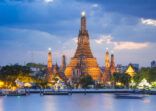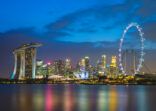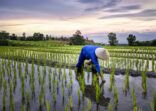Editor’s note: This article was first published on ESG Clarity Asia.
Manila-based ATR Asset Management (ATRAM) has become the first firm in the Philippines to launch a fund that supports the United Nation’s Sustainable Development Goals (SDGs).
Incepted on 17 February, the ATRAM Philippine Sustainable Development and Growth Fund invests in domestic companies that score high in terms of integrating SDG goals.
Only a few companies in the Philippines integrate SDGs into their business operations, according to Jose Mari Lacson, ATRAM’s head of SDG research.
Initially, the fund will only have around 20 names in the portfolio. Examples of companies in the Philippines that integrate SDGs include banking groups Bank of the Philippine Islands (BPI) and Banco De Oro (Oro), and fast-food chain Jollibee, which is widely known for its “Chickenjoy” fried chicken.
“There are listed companies that communicate their support for the UN SDGs through their own ways and in varying levels. Relative to the university of Philippine companies, however, the ones who are more strategic in SDG integration or adoption are only a minority,” Lacson told FSA.
Awareness of ESG risks is rising among Philippine companies, especially since regulation now requires them to disclose sustainability efforts. However, most companies are still implementing a corporate social responsibility (CSR) approach to sustainability, while other companies utilise an enterprise risk management (ERM) framework as the basis for their ESG approach.
It was only in 2019 when publicly listed companies in the country were required to submit a sustainability report together with their annual report, according to a circular issued by the Securities and Exchange Commission in the Philippines.
“Philippine companies are still developing their own SDG approach as they transform their efforts from CSR and ERP towards sustainable investing and ESG risk management. It is still very much early days for sustainability integration for the Philippines relative to more advanced markets such as Europe.
“The first step is really reporting standard ESG risk factors such as their carbon footprint, water and energy intensity, and that’s where we generally are – the first step,” Lacson said.
SUSTAINABLE INVESTING DEMAND
Unlike other more developed markets in Asia, ESG or sustainable investing in the Philippines is still in its infancy.
Out of all unit investment trust funds (UITFs) offered in the country, there are only two “ESG”- or “sustainable”-labelled funds available to investors, which are ATRAM’s fund and the BDO ESG Equity Fund, according to data from the Trust Officers Association in the Philippines. The BDO fund, which was launched in 2015, has Ps 105.9m ($2.18m) in assets, according to its fund factsheet.
Meanwhile, more ESG or sustainable funds have been rolled out in other Southeast Asian markets. Malaysia now has 16 ESG funds, while Thailand and Indonesia have 10 and nine, respectively, according to data from Morningstar.
“We have only started to dig deeper into the investor market for sustainability-focused investor products,” Lacson said. “Our early findings show that a younger generation of investors appears to be more interested in investing in sustainability strategies. They are more technology savvy and keenly aware of the SDG issues,” he said.
There is also positive feedback among high-net-worth individuals in the country, and their SDG requirements may be diverse enough to merit more focused sustainability products, such as environmental- or wellness-centric funds.
The institutional market, however, is more cautious despite being more ESG aware and having access to SDG material. “Key issues include concerns over the sustainability of sustainability themes and a preference for exclusion or negative filters as opposed to inclusion to integration metrics,” Lacson said.
“Pushing awareness is part of the objectives of the ATRAM SDG Fund and our view is one way to build awareness or education is through data. But there is not enough SDG and ESG-related data in the local setting for investors to use and it can be a challenge to analyse if there are no standards in the metrics use,” Lacson said.
To learn more about ESG in Asia, please click on www.esgclarityasia.com

















